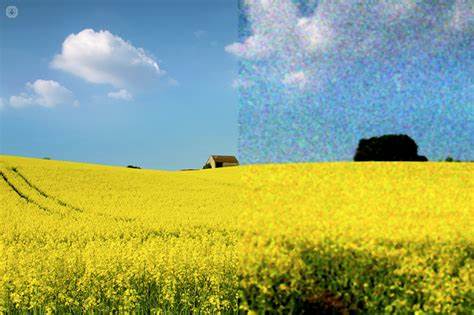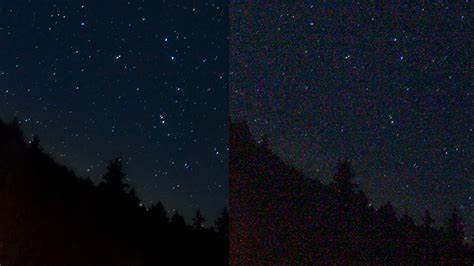Visual Snow Syndrome
- Connie Porteous
- Nov 18, 2024
- 5 min read
Updated: Nov 20, 2024
This Ghost I painted is how I see...I call my vision mottling; they call it snowflake.
Sketch is how I see lights at night...when it's raining it's far worse.
November 18, 2024
I have this weird blurriness to my eyesight, yet my eyes are perfect. I still basically have 20/20 vision, I say basically because they are both off minutely, one is slightly nearsighted, the other slightly farsighted and the left one has a bit of astigmatism...but the Optometrist says that asides from these tiny anomalies, they are perfect. So, he says that what is wrong with my sight is a Neurological Condition called Visual Snow Syndrome.
I called it mottling when describing it to healthcare professionals because, being an artist, this is what I saw it as...like Impressionism...there's a strange pattern underlay that makes the visual field very busy. It feels like I'm looking at a picture under a layer of rippling water, and the busier the object I am looking at, the more movement seems to happen. My vision is like pointillism all the time and it changes with my health, from not too bad, to extremely dizzying. This is with me even when my eyes are closed, a multitude of black and white dots shifting around. Amongst those small dots, there are clouds that move around when I close my eyes, shifting and flowing... (I actually thought that was normal). Then there's all that movement, the pulsating, flickering patterns that shimmer and shake...this makes me dizzy and nauseous.
I have trouble with bright lights. I don't like overhead lights, especially the fluorescent ones that are aways in offices...they shimmer and move which again makes me nauseous, and the noise of them just drives me crazy. I have to be made aware that these lights are coming on so I can ready myself for the impact, and if I can have my choice, they don't come on at all. On days when it is extremely sunny and my head hurts, I have a hard time being outdoors, having bright lights on in the house, or even just looking at screens. I keep my cell on low light for the most part and the Optometrist told me to get a blue light screen filter for my laptop.
The night blindness I think really is the worst part, it makes my life very difficult...always has...I could never see in the dark and had to learn how to cope with that in my daily life. I know the layout of my place, keeping the areas I frequent, clear, and the things I may need during the night, easily accessible. Then I don't have to turn a light on and make things worse, as once that light goes off, everything is in complete darkness until my eyes readjust to allow the smallest bit of light back in. Driving at night is near impossible for me, I'm not bad when alone on the road, the headlights do a good job, but if it is raining, it's difficult. When there is oncoming traffic, I have a hard time seeing the road, and if there's someone behind me too, I've lost the road completely and have slowed down and am sitting up close to the steering wheel hoping to catch a glimpse of something I can recognize to keep me on the road. These lights cause halos, starbursts and glare, that again, is made worse in wet conditions and extremely difficult to see with other vehicles around me. Driving in and out of lights at night not only makes it difficult to see but also makes my head hurt, I can feel the starburst stabbing into my brain. The optometrist gave me glasses to wear at night, but they hurt too ... in a different way ... so I am basically house bound until daytime, or I have to rely on others to drive me places. When I was younger, I took the bus, rode my bike or walked, so it was manageable. Now I have no choice but to use a car and that's far too dangerous, so I miss out on a lot of things, but I'd rather be safe, and keep others safe too, by not driving at night.
Visual Snow Syndrome is a rare neurological visual processing disorder that unlikely will ever go away, there is no cure for VSS, but there are ways to manage it. The goal to treating VSS is trying to minimize the symptoms and improve quality of life. VSS is a poorly understood condition, but research and a growing awareness of its symptoms are helping to improve diagnosis and management.
The exact cause of VSS is unknown, but it's believed to be related to how the visual information is processed by the brain. Some causes can be from nutrional deficiencies like low B12 and Magnesium. Other causes could be mental health issues as it is present in people with anxiety and depression. Migraines are more prevalent in people with VSS, and this can also make both of those conditions worse. Because I have Migraine with aura, Fibromyalgia and Tinnitus, the likelihood of developing VSS was that much greater. And to top it off, those us who have had a history of traumatic brain injuries, would most likely have VSS from them.
It's a bummer knowing there isn't much of anything that can be done about this syndrome, at this time anyway. But it is comforting to know what is causing a lot of my issues and work towards alleviating some of them. Knowing all this, I can make better decisions for my future.
Asides from visual snow, I also experience other issues that are connected to this syndrome....

Core Symptoms -
Palinopsia - 'trailing' where you see a trail behind a moving object

Excessive Entoptic Phenomenon -
Blue-Field Entoptic Phenomenon - where you see numerous small white blood cells traveling around your eyesight

Self-Light of the Eye - these are weird swirling clouds that are present when eyes are closed

Photophobia - light sensitivity
Nyctalopia - night blindness - difficult to see in low light (esp. with bright lights coming towards you - halos, starbursts, glare)

Additional Symptoms -
Visual Symptoms -
Halos - very bright circles around lights

Starbursts - are long rays of light that expand from its source

Glare - is when the light goes farther out than its normal area should be

Pulsating Vision - the vision pulsates with heartbeat
Flickering Vision - moves like heatwaves
Pattern Glare - patterns shimmer, shake and/or vibrate
Non - Visual Symptoms -
Tinnitus - constant ringing in ears
Hyperacusis - unable to tolerate certain sounds and frequencies
Brain Fog - confusion, forgetfulness, unfocused
Psychiatric - depression and anxiety
Vertigo and Nausea - the feeling of spinning even at rest, causing upset stomach
Tremor - an uncontrollable trembling of body parts
Insomnia - chronic fatigue
Migraines - aura, nausea
These three photos compare normal vision to visual snow.











